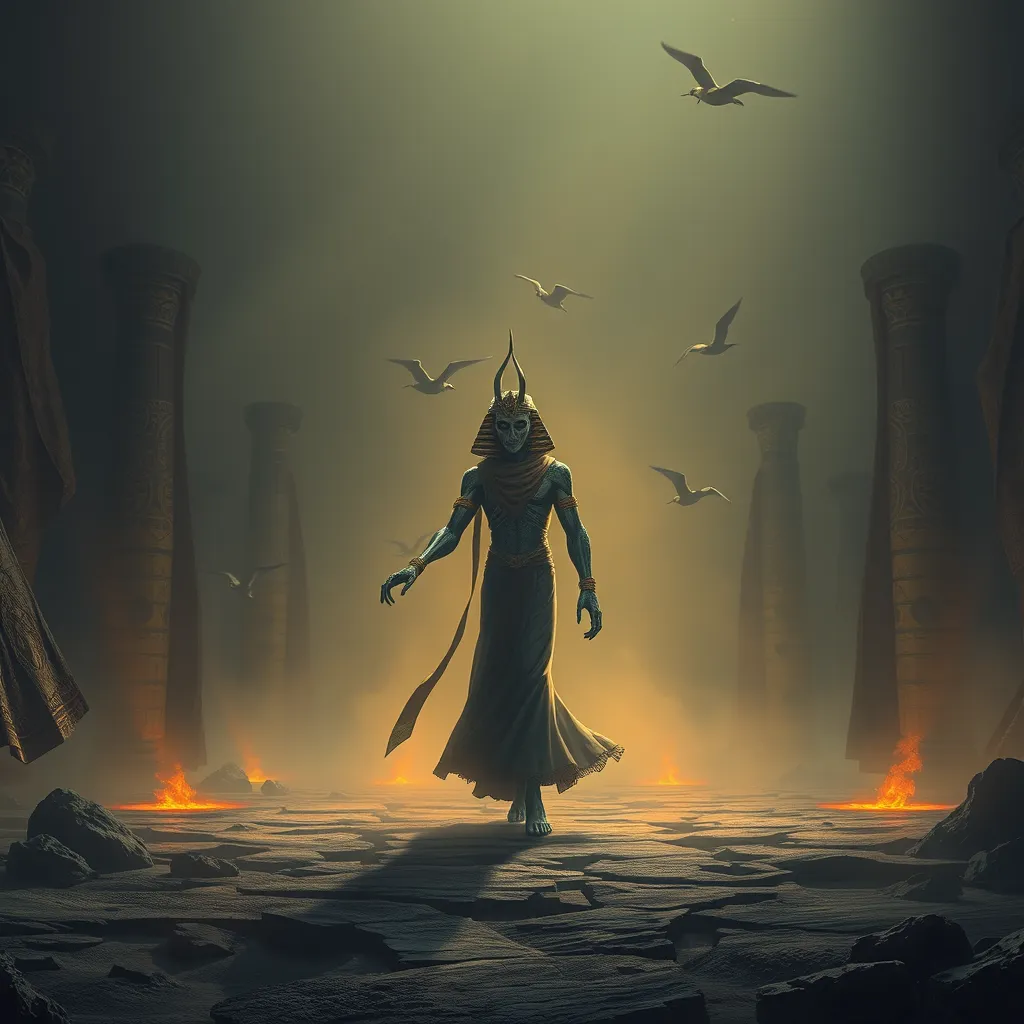The Dance of the Dead: A Journey Through the Realm of Shadows
I. Introduction to the Realm of Shadows
The “Realm of Shadows” is a conceptual space that embodies the mysteries of death and the afterlife. It signifies the liminal space where the living and the dead coexist, reflecting cultural beliefs about mortality and existence beyond life. This realm is not merely a place of darkness; it is a richly textured environment filled with stories, memories, and rituals.
Throughout history, different cultures have developed unique perspectives on death, shaping their rituals, beliefs, and artistic expressions. The significance of these cultural interpretations can be seen in how societies honor their dead, illustrating the profound connection between life and the afterlife. This article aims to explore the interplay between life and death through the lens of dance, a universal language that transcends cultural boundaries.
II. Historical Perspectives on Death and Dance
Dance has played a crucial role in many ancient rituals associated with death and the afterlife. Various civilizations incorporated movement into their funerary practices, believing that dance could facilitate communication with the dead or honor their spirits.
- Ancient rituals: From the ancient Egyptians’ elaborate burial dances to the Celtic traditions of honoring the dead through movement, dance has served as a bridge between the living and the deceased.
- Funerary practices: Many cultures, such as the Yoruba in Nigeria and the Mexica (Aztecs), consider dance essential in funerals, helping to guide souls to the afterlife.
- Symbolism of movement: The rhythm and flow of dance often mirror the emotional states of grief, conveying feelings that words alone cannot express.
III. Folklore and Myths: The Dance of the Dead
Global folklore is rich with tales of the dead and the supernatural, frequently featuring dancing spirits or figures associated with death. These stories often serve to reinforce cultural values and beliefs surrounding mortality.
- Global folklore: Cultures around the world, from the Danza de los Muertos in Mexico to the Dance of the Dead in Slavic traditions, celebrate the relationship between the living and the deceased through dance.
- Notable myths: Stories such as the “Dance of the Witches” in European folklore portray the dead as engaging in revelry, reminding the living of the continuity of life beyond death.
- Cultural identity: These narratives play a vital role in shaping cultural identity, allowing communities to process grief and maintain connections with their ancestors.
IV. The Artistic Interpretation of Death in Dance
Artistic expressions of death through dance have evolved significantly, reflecting contemporary themes and personal experiences of mortality.
- Famous performances: Works like “The Rite of Spring” by Igor Stravinsky and “The Nutcracker” often explore themes of death and rebirth through choreography and music.
- Contemporary dance: Modern choreographers frequently incorporate death-related themes into their work, using movement to address issues such as loss, grief, and the human condition.
- Emotional impact: Dance serves as a powerful medium for confronting mortality, allowing both performers and audiences to engage with their fears and hopes regarding death.
V. Rituals and Festivals: Celebrating the Dead
Cultural festivals that honor the deceased are often vibrant occasions filled with dance, music, and communal celebration. These events serve to reinforce social bonds and cultural heritage.
- Dia de los Muertos: In Mexico, this festival combines indigenous and Catholic traditions, where families honor their dead through altars, offerings, and joyful dance.
- Dance’s role: In many cultures, dance is integral to these celebrations, symbolizing the cyclical nature of life and death, and fostering a connection between the living and the dead.
- Connection to the dead: Through dance, participants express love and remembrance, transforming grief into a celebration of life.
VI. The Psychological Aspects of Dancing with Shadows
Dancing can be a profound means of processing grief and loss. The act of movement allows individuals to express emotions that may be difficult to articulate.
- Understanding grief: Dance therapy has emerged as a valuable tool for individuals dealing with loss, helping them to confront and navigate their feelings.
- Therapeutic benefits: Engaging in dance can facilitate emotional release, encourage healing, and provide a sense of community among those who share similar experiences.
- Personal stories: Many dancers have shared transformative experiences where dance helped them cope with the loss of a loved one, illustrating the art form’s healing power.
VII. The Future of Dance in the Context of Death
As society evolves, so too does the interpretation of death in dance. Emerging trends are reshaping how we view mortality in artistic expressions.
- Emerging trends: Contemporary dance increasingly explores themes of mortality, pushing boundaries to reflect current societal attitudes towards death.
- Virtual reality: Technology is beginning to play a role in depicting the dance of the dead, allowing audiences to experience death’s themes in immersive ways.
- Changing perceptions: As discussions about death become more open and varied, dance will continue to reflect and shape our understanding of life and loss.
VIII. Conclusion: Embracing the Dance of Life and Death
This exploration of the dance of the dead illuminates the intricate relationship between life and death. From ancient rituals to contemporary expressions, dance serves as a powerful medium for expressing our deepest emotions regarding mortality.
As we acknowledge death as an integral part of life’s journey, we can find solace and healing through the art of dance. We invite readers to reflect on their own experiences with death and consider the potential of dance to foster healing and connection in their lives.




